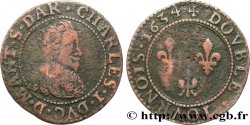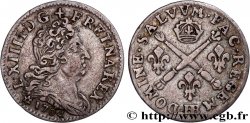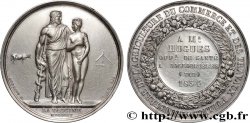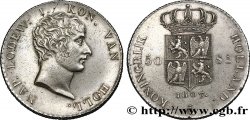Live auction - fme_949432 - III REPUBLIC Lot de deux médailles et de cinq photos, André Theuriet
You must signin and be an approved bidder to bid, LOGIN TO BID. Accounts are subject to approval and the approval process takes place within 48 hours. Do not wait until the day a sale closes to register. Clicking on "BID" constitutes acceptance of the terms of use of cgb.fr private live auctions.
Bids must be placed in whole Euro amounts only. The sale will start closing at the time stated on the item description; any bids received at the site after the closing time will not be executed. Transmission times may vary and bids could be rejected if you wait until the last second. For further information check the Live auction FAQ
All winning bids are subject to a 18% buyer’s fee.
All winning bids are subject to a 18% buyer’s fee.
| Estimate : | 60 € |
| Price : | 30 € |
| Maximum bid : | 30 € |
| End of the sale : | 20 August 2024 17:07:17 |
| bidders : | 1 bidder |
Type : Lot de deux médailles et de cinq photos, André Theuriet
Date: 1936
Mint name / Town : 75 - Paris
Metal : various
Diameter : 36,50 mm
Orientation dies : 12 h.
Weight : 11,58 g.
Edge : lisse
Puncheon : Tête de sanglier et losange
Coments on the condition:
Patine hétérogène, quelques traces noires d’oxydation, légères concrétions vertes.
Obverse
Obverse legend : 1936 // TCL
AS.
Obverse description : Raquette de tennis avec une balle et une inscription émaillée en bleu deux tons dans un médaillon, couronne de laurier.
Médaillette émaillée en forme d’écu avec un coeur, un trèfle, un carreau et un pic dans des cases colorées avec le monogramme AS au centre dans un cercle.
Reverse
Reverse legend : ANÉPIGRAPHE
LES / “AMIS DES SPORTS” / A / A. THEURIET.
Reverse description : Lisse
Inscription en quatre lignes.
Commentary
Lot de deux médailles :
- Médaille de tennis, 1936. Dimensions sans anneau : 36,50*29 mm. Poids : 7,39 g. La médaille est conservée dans une boîte marron.
- Médaille des “amis des sports”, non datée. Dimensions sans anneau : 24,50*18,50 mm. Poids : 4,19 g. La médaille est conservée dans une boîte écrin marron.
Le lot comporte également quatre photos de famille et une photographie d’André Theuriet avec sa biographie.
- photographie de Monsieur Dancosse, le beau-père d’André Theuriet, d’origine russe. Photographie collée sur papier et légende manuscrite au revers. Dimensions : 19,7 x 12,5 cm.
- photographie d’André Theuriet enfant, avec d’autres enfants de sa famille. Photographie sur carton avec légende manuscrite au revers. Dimensions : 18,5 x 13,5 cm.
- Photographie de Germaine Theuriet, soeur d’André Theuriet, assise sur une chaise. Photographie sur carton avec légende manuscrite au revers. Dimensions : 18 x 13 cm.
- Deux photographies du paysage à l’Arbresle, village du Rhône, sur un carton avec légende manuscrite au revers. Dimensions : 17,5 x 8,7 cm.
- photographie imprimée d’André Theuriet avec sa biographie au revers, sous une protection plastique . Dimensions : 16 x 10,5 cm.
André Theuriet (1887-1965) est un illustre sportif français. Il s’investit tout au long de sa vie dans de très nombreux sports, comme la canne de combat, le tir, la marche, la boxe anglaise, le hockey sur gazon, ou encore le football. Il est capitaine du SCUF (sporting club universitaire de France) pour le rugby en 1921. Il a reçu de très nombreux prix : champion de France scolaire d’athlétisme, Champion de France scolaire et universitaire de Cross country, Champion de Paris de water polo en 1909. Il participe même aux Jeux Olympiques de Londres en 1908 en natation, dans l’épreuve du 1500 mètres nage libre. Il acquiert au rugby une notoriété internationale en représentant la France entre 1909 et 1913..
- Médaille de tennis, 1936. Dimensions sans anneau : 36,50*29 mm. Poids : 7,39 g. La médaille est conservée dans une boîte marron.
- Médaille des “amis des sports”, non datée. Dimensions sans anneau : 24,50*18,50 mm. Poids : 4,19 g. La médaille est conservée dans une boîte écrin marron.
Le lot comporte également quatre photos de famille et une photographie d’André Theuriet avec sa biographie.
- photographie de Monsieur Dancosse, le beau-père d’André Theuriet, d’origine russe. Photographie collée sur papier et légende manuscrite au revers. Dimensions : 19,7 x 12,5 cm.
- photographie d’André Theuriet enfant, avec d’autres enfants de sa famille. Photographie sur carton avec légende manuscrite au revers. Dimensions : 18,5 x 13,5 cm.
- Photographie de Germaine Theuriet, soeur d’André Theuriet, assise sur une chaise. Photographie sur carton avec légende manuscrite au revers. Dimensions : 18 x 13 cm.
- Deux photographies du paysage à l’Arbresle, village du Rhône, sur un carton avec légende manuscrite au revers. Dimensions : 17,5 x 8,7 cm.
- photographie imprimée d’André Theuriet avec sa biographie au revers, sous une protection plastique . Dimensions : 16 x 10,5 cm.
André Theuriet (1887-1965) est un illustre sportif français. Il s’investit tout au long de sa vie dans de très nombreux sports, comme la canne de combat, le tir, la marche, la boxe anglaise, le hockey sur gazon, ou encore le football. Il est capitaine du SCUF (sporting club universitaire de France) pour le rugby en 1921. Il a reçu de très nombreux prix : champion de France scolaire d’athlétisme, Champion de France scolaire et universitaire de Cross country, Champion de Paris de water polo en 1909. Il participe même aux Jeux Olympiques de Londres en 1908 en natation, dans l’épreuve du 1500 mètres nage libre. Il acquiert au rugby une notoriété internationale en représentant la France entre 1909 et 1913..








 Report a mistake
Report a mistake Print the page
Print the page Share my selection
Share my selection Ask a question
Ask a question Consign / sell
Consign / sell
 Full data
Full data















